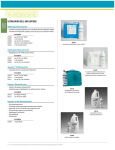Download here - Complete ECG / EKG Generator and Waveform Simulator
Transcript
www.completeecggenerator.com Complete ECG Generator System USER MANUAL Contents 1. 1.1. 1.2. 2. 3. 4. 4.1. 4.1.1 4.1.2 4.1.3 4.1.3.1 4.1.3.2 4.1.3.3 4.1.3.4 4.1.3.5 4.1.4 4.2. 4.2.1 4.2.2 4.2.2.1 4.2.2.2 4.2.3 4.2.4 4.2.5 4.3. Appendix Appendix Appendix Appendix Appendix Introduction……………………………………………………………………… Purpose…………………………………………………………………………………… System Organization…………………………………………………… Requirements to the System………………………………… Features of the System…………………………………………… Software structure……………………………………………………… Settings section…………………………………………………………… COM Port Settings………………………………………………………… FTDI status button……………………………………………………… Main settings section……………………………………………… Selection of COM Port……………………………………………… FTDI Settings…………………………………………………………………… Signal View Settings………………………………………………… Save settings…………………………………………………………………… Open Device Manager…………………………………………………… Viewer Settings……………………………………………………………… Signal generation section…………………………………… Signal Preview………………………………………………………………… ECG Databases…………………………………………………………………… ECG Database settings …………………………………………… ECG Database signals………………………………………………… ECG Amplifier testing signals………………………… Test Waveforms………………………………………………………………… Rhythm abnormalities signals…………………………… bxb analysis section………………………………………………… A - Reference Links…………………………………………………… B - Supported ECG Database & Recordings C - Files & Folders conventions…………………… D – Troubleshooting…………………………………………………… E - Signal quality and working setup……… 2 2 2 3 4 7 7 7 7 8 8 9 9 9 9 9 10 10 11 11 12 14 16 18 20 23 24 28 29 30 www.completeecggenerator.com 1. Introduction 1.1. Purpose The system offers complete solution for development and testing of analogue hardware of cardiac devices using various geometric waveforms and ECG analysis algorithms by generating real analogue signals using MIT and other compatible ECG databases. Complete ECG Generator (CEG) system creates custom annotation files that can be compared against the original database annotation files using bxb application. In addition, the system generates simplified waveforms with various rhythm abnormalities for the preliminary testing of autotrigger algorithms. 1.2. System Organization System includes two main components: - Complete ECG Generator device (Device) - Complete ECG Generator application (Application) Complete ECG Generator Device Complete ECG Generator device generates high accuracy (+/- 1% amplitude and timing tolerance) dual channel analogue signals converting digital data received from Complete ECG Generator application. In addition to its signal generation function, the Device is able to receive from the cardiac device under the test digital signals such as QRS pulse, Trigger pulse and Special Event signal (for instance, inhibition of real time analysis due to excessive noise). The Complete ECG Generator Device sends these signals to the Application that stores them as a custom annotation file. For the development purposes Device has higher voltage signal outputs with DAC reference 2.048V (0 - 4.096V output) that can be interfaced directly to the emulators, omitting front end amplifiers to avoid common mode interference. Complete ECG Generator Device is powered by the USB bus that eliminates the need for the batteries or power adaptors and has a floating section that generates analogue signals converting received from the PC digital data using 12-bit DAC. Floating section has optically isolated data lines and is powered by isolated DC-DC converter. Complete ECG Generator Application Complete ECG Generator application is Windows based software that controls operation of Complete ECG Generator device. Functions of Application include: - testing of USB interface, - settings for Application desktop options, - selection of signal category (database signals, ECG amplifier testing signals, ANSI/AAMI EC130210:2002 recommended signals or Rhythm abnormalities signals), - setting of generated signal parameters, 2 www.completeecggenerator.com - batch option to sequentially reproduce all ECG database recordings from the selected folder, - display of generated waveforms, QRS, Trigger and Special Event markers received from the device under the test, - display of elapsed time and other relevant information during signal generation, - generates annotation file for all ECG recordings where QRS, Trigger or Special Event markers have been generated. Each annotation file is saved under unique name, - perform bxb analysis for two annotation files (reference and test). Generated signals are divided into four categories: - ECG Database signals include all MIT-BIH and some other compatible database recordings, generated for the entire duration of the recordings without any signal modification or padding, - ECG Amplifier testing signals such as square, sine, triangle, sawtooth waves and DC Offset signal. Settings for frequency and amplitude of these signals offer wide variety of choices for amplifier and filters testing and calibration, - Test Waveforms (ANSI/AAMI EC130210:2002 recommended signals that used for testing of particular requirements and essential performance of cardiac equipment), - Rhythm abnormalities signals that used for the preliminary testing of autotrigger algorithms WARNING! Due to very sensitive timing requirements of Windows operating system it is recommended to use a “clean computer” which is not connected to the Internet and does not use residential software like antivirus. It is also recommended not to start any other application while Complete ECG Generator is in operation. Starting the System Upon connection to the USB bus the generator illuminates its yellow LED and green LED blinks several times indicating that the Device is ready to be initialised by the Complete ECG Generator Application. During normal operation green LED blinks every second. 2. Requirements to the System PC Hardware minimal requirements - CPU 2 GHz - RAM 2 GB - Graphics card resolution 1024x768 - USB port - 200 MB HDD free space PC Software minimal requirements - Windows XP SP3 + - FTDI driver. The Device uses USB port of the computer to communicate with software Application. Floating section of the Device is optically isolated from the computer in order to eliminate common mode noise. Since optical isolation of the USB signals is not a trivial task, RS232 protocol is used to transfer data to and from the floating section of the Device. FTDI chip converts RS232 data format into USB 3 www.completeecggenerator.com - data format. FTDI driver implements a virtual RS232 port on the computer that is in fact connected to the USB port. (See FTDI Driver reference in Appendix A) Adobe Acrobat Reader (See Adobe Acrobat Reader reference in Appendix A) 3. Features of the System Low voltage output Low voltage output includes three signals: CH1, CH2 and reference voltage. Voltage levels on the low voltage output correspond to format 212 of various ECG databases. Three press stud type connector headers are placed on the top side of the generator. This output is implemented for testing of electrocardiographic equipment including front end circuitry. Note: Shielded and short ECG leads should be used to connect device under test to the generator in order to minimise common mode noise that can be picked up by the leads. USB COMPUTER Complete ECG Generator SPECIAL EVENT QRS / TRIGGER Device under test ECG CH1 ECG REF (5mV) ECG CH2 FIG. 3.1 Connection diagram of Complete ECG Generator Device under Test High voltage output High voltage output that available on 2.5mm stereo jack connector (see FIG 1.4) includes three signals: CH1, CH2 and ground. Voltage levels on the high voltage output correspond to 0 to 4.096V full scale with 2.048V reference. This output is implemented for testing of electrocardiographic equipment on the development stages using emulators. 4 www.completeecggenerator.com COMPUTER 1 USB COMPUTER 2 Complete ECG Generator SPECIAL EVENT QRS / TRIGGER EMULATOR ECG CH1 GROUND ECG CH2 FIG. 3.2 Connection diagram of Complete ECG Generator Device for development using emulator Hook up inputs The generator has two hook up inputs that allow for creating of custom annotation files for further comparison them against the original database annotation. The hook up inputs are available on 3.5mm stereo jack connector (see FIG 3.4) NOTE: Annotation file is created ONLY when the entire recording was replayed. QRS/Trigger input 4V 4V QRS/Trigger input accepts logic level pulses that are generated by the device under test and correspond to the detected QRS waves or by rhythm analysis trigger. The device under the test generates 5mS pulse when QRS has been detected or 50mS pulse when QRS/Trigger occurred See FIG 3.3. > 50 mS 5 mS QRS pulse QRS / Trigger pulse FIG. 3.3 QRS and Trigger signals 5 www.completeecggenerator.com Note that decision to declare a trigger coincides with detection of the QRS when rhythm analysis is performed. Therefore, trigger pulse is also treated as a QRS. When the Generator receives from the device under the test QRS/Trigger pulses, it transmits a corresponding number of the digital sample to the PC and that number is stored in the custom annotation file. The Generator also displays QRS/Trigger markers. The generator distinguishes between QRS and trigger pulses and sends to the PC two different codes. Special event input Special event input accepts logic level signal that corresponds to the selected by the developer event that is generated by the embedded firmware. Special event has its beginning when the signal is set high and the end when the signal is set low. FIG. 3.4 QRS/Trigger and special event signals and ECG data relationship when embedded firmware inhibited QRS detection due to amplifier saturation 3.5mm STEREO JACK COMMON QRS/TRIGGER INPUT SPECIAL EVENT INPUT 2.5mm STEREO JACK DAC CH2 0-4.096V OUTPUT DAC CH1 0-4.096V OUTPUT GND FIG. 3.5 Pin assignment of input and output connectors NOTE: In case of excessive common mode noise use laptop computer with battery power supply (see also Appendix E) 6 www.completeecggenerator.com 4. Software structure of the CEG Application Block diagram of software structure is shown below MAIN MENU EXIT SETTINGS Database signals generation ECG Amplifier testing signals ANSI/AAMI EC13:2002 recommended signals generation START SIGNAL GENERATION Annotation for each of processed recordings Simulated rhithm abnormalities BXB STOP SIGNAL GENERATION SIGNAL SETTINGS Print/Save bxb result file SIGNAL GENERATION SECTION 4.1. Settings section Settings section includes all settings that control operation of the Complete ECG Generator. 4.1.1 COM Port Settings Shows PC COM Port selected for connection to the Device. 4.1.2 FTDI status FTDI button shows number of connected FTDI devices to PC and when depressed, updates status. no FTDI device is connected to the PC 7 www.completeecggenerator.com FTDI device(s) connected to the PC. Red flag on the icon indicates that FTDI device is detected. 4.1.3 Main settings section To open Main Settings click the button below Main Settings interface includes 3 sections. 4.1.3.1 Selection of COM Port Using button “Test” (FTDI Settings) check available COM ports on your computer. Select COM Port number (Select COM Port) that corresponds to the USB Serial Port on your PC. 8 www.completeecggenerator.com 4.1.3.2 FTDI Settings This section allows for testing FTDI devices, connected to the PC. NOTE: It is recommended that only one FTDI device is connected to the PC during operation of the Complete ECG Generator system. 4.1.3.3 Signal View Settings This section enables/disables display of various variables during signal generation. 4.1.3.4 Save settings To save settings click Save button. 4.1.3.5 Open Device Manager To open Windows’ Device Manager (where available COM ports can be seen or renamed if required) click Device Manager button. 4.1.4 Viewer Settings To open Viewer Settings click the button below. Viewer Settings interface includes 2 sections. Parameters section - shows signal graph window color settings allows to select color setting for each listed item Preview section - shows signal sample with color settings from Parameters section To change color for graph color settings selected from Parameters section click Colors button. 9 www.completeecggenerator.com From Color interface select required color and click OK button. To save Color setting changes click Save button. 4.2. Signal generation section System supports 4 categories of generated signals. 4.2.1. Signal Preview This window allows for the display of the beginning of any selected signal. It includes graph window, channel selection, scales selection and refresh preview window button. Channel 1 or 2 can be selected for two channel signal. 10 www.completeecggenerator.com For the single channel signal (some of ECG Database and other signals) does not matter which channel was selected and will show the same signal graph in any selected channel. Signal graph can be resized in graph window in both horizontal and vertical direction from scale drop down boxes. Scale option works only for Signal Preview window and does not change the original signal parameters during generation of the signal. To see signal channel & scale changes click Refresh button. 4.2.2. ECG Databases ECG databases include digitized ECG signals and beat annotations. See ECG Databases reference from Appendix A and Supported ECG Database Recordings list from Appendix B. 4.2.2.1 ECG Database settings In the database settings section several options can be selected by the user: - Device QRS option, if enabled, will display QRS markers as vertical lines that drawn at the position of the QRS pulse received from the device under the test (see section 3 above). - Device Trigger option, if enabled, will display Trigger markers as letter “T” at the position of the Trigger pulse received from the device under the test (see section 3 above). - Device Event option, if enabled, will display Events by changing color of the ECG graphs at the beginning and the end of the Event. - Annotation option, if enabled, will display annotation markers of the selected database recording. - Timer option, if enabled, will display time elapsed since the beginning of the recording. - Countdown option, if enabled, will display time to the end of the recording. - Channel 1 option, if enabled, will display ECG graph of Channel 1 of the database recording. - Channel 2 option, if enabled, will display ECG graph of Channel 2 of the database recording. 11 www.completeecggenerator.com 4.2.2.2 ECG Database signals The system supports two options for generating database ECG signals: - Single file, - Batch option sequentially generates signals from all files in the selected database folder. NOTE: Both Single and Batch options support bxb comparison of annotation files. To open interface click ECG Databases option box. To search for a single ECG recording click the button below. MIT-BIH Database example Navigate to the MIT database folder and select a header file of the required recording. Information related to the selected recording: a. Header file content 12 www.completeecggenerator.com b. ECG file preview c. List of recordings To search for a batch of ECG recordings click the button below. From folder search interface select required ECG database folder with recording files. List of recordings includes all found supported recordings in the selected folder. To see information related to any recording click on the corresponding recording number in the table below and it will show Header file content and ECG file preview as above. 13 www.completeecggenerator.com To run signal generation process for single or batch recordings click Start button. ECG window will show the generated signal and reference annotation marks. After generation process is complete, test annotation file for each recording will be created in the test annotation folder (see Appendix C - Files & Folders conventions). To terminate generation process click Stop button. N.B. No annotation file will be created for terminated database playback. 4.2.3. ECG Amplifier testing signals Common periodic waveforms include: - Sine wave The amplitude of the waveform follows a trigonometric sine function with respect to time. - Square wave This waveform is commonly used to assess filter function of the ECG amplifier. - Triangle wave It contains odd harmonics. - Sawtooth wave This looks like the teeth of a saw. Sawtooth wave of constant period contains odd and even harmonics. 14 www.completeecggenerator.com DC Offset test signal This signal is used to test DC offset performance of front end of ECG amplifier. User selectable values of 0mV, ±100mV, ±200mV and ±300mV are available. Square pulses ±2mV 1Hz are superimposed over selected DC offset. (See ECG Amplifier testing signals reference from Appendix A). To open interface click ECG Amplifier testing signals option box. To select required waveform click Sine, Square, Triangle, Sawtooth or DC Offset button. Sine waveform example Sine signal preview window: Frequency and Amplitude of the selected signal can be adjusted from ECG Amplifier Parameters interface: 15 www.completeecggenerator.com To run signal generation process click Start button Generated waveform graphs will be available for visual control in the Generate the Signal window: To stop generation process click Stop button Generation and visualization process for other ECG Amplifier testing signals are the same as for Sine waveform. No annotation file will be generated for ECG Amplifier testing signals. 4.2.4. Test Waveforms Test Waveforms signals are generated in accordance with ANSI/AAMI EC13:2002 (Cardiac monitors, heart rate meters, and alarms) standard. The files in this set can be used for testing a variety of devices that monitor the electrocardiogram. The recordings include both synthetic and real waveforms. See Test Waveforms reference in Appendix A. To open interface click Test Waveforms option box. To select required waveform click the appropriate button below: 16 www.completeecggenerator.com After installation of Application no test waveform information exists in the system. To make each of this signal available for generation click Create button on the right side of the required waveform button. It is user’s responsibility to comply with AAMI copyright requirements when creating such waveforms. Triangle waveform example From the interface below select signal parameters from available drop down boxes and click Save button. Triangle signal preview window Triangle signal parameters window To run signal generation click Start button 17 www.completeecggenerator.com Generated waveform graphs are displayed in the Generate the Signal window. To stop generation process click Stop button. Generation and visualization process for other test waveforms is the same as for the Triangle waveform. No annotation file will be generated for Test Waveforms. 4.2.5. Rhythm abnormalities signals These signals help in development of QRS detectors and auto trigger function. The user can select what kind of rhythm abnormality will be inserted into the normal sinus rhythm of 60bpm. Duration of the normal sinus rhythm run is selected by the user. Signal parameters are user selectable. List of abnormalities include: Pause.................................. Bradycardia........................ Tachycardia........................ Atrial fibrillation................ Ventricular fibrillation…… duration is set by the user 40bpm (duration of the run is set by the user) 140bpm (duration of the run is set by the user) duration of the run is set by the user duration of the run is set by the user To SELECT required signal use Left mouse click the appropriate button below. To EDIT required signal use Right mouse click the appropriate button below. 18 www.completeecggenerator.com Pause signal example From the interface below select signal parameters from available drop down boxes and click Save button. Pause signal preview window Pause signal parameters window To run signal generation process click Start button Generated signal graphs are displayed in the Generate the Signal window. 19 www.completeecggenerator.com To stop generation process click Stop button: Generation and visualization process for the other Rhythm abnormalities signals are the same as for the Pause signal. No annotation file will be generated for Rhythm abnormalities signals. 4.3. bxb analysis section BXB Analysis uses beat-by-beat comparison algorithm described in ANSI/AAMI EC38:1998, the American National Standard for Ambulatory ECG monitors, and in ANSI/AAMI EC57:1998, the American National Standard for Testing and Reporting Performance Results of Cardiac Rhythm and ST Segment Measurement Algorithms. (See BXB Analysis reference in Appendix A.) bxb application is part of WFDB Software Package. (See WFDB Software Package reference in Appendix A.) To open BXB Analysis interface click BXB button: BXB Analysis interface includes 2 sections. Test Annotation File / Folder section - navigates to the single annotation file for bxb analysis navigates to the batch of annotation files for bxb analysis adjusts match window To navigate to the test annotation file click File button. 20 www.completeecggenerator.com Select required test annotation file and click Start button. Results will be shown in BXB Analysis Result window: To navigate to the batch of test annotation files click Folder button. Click OK button when select required test annotation files folder, then click Start button. 21 www.completeecggenerator.com Results will be shown in BXB Analysis Result window: BXB Analysis for both annotation File and Folder can be created with adjustable (from drop down box) match window. BXB Analysis Result section - makes bxb analysis shows bxb analysis results in window prints bxb analysis results saves bxb analysis results in text file. (See Appendix C - Files & Folders conventions). 22 www.completeecggenerator.com Appendix A – Reference Links ECG Databases: http://www.physionet.org/physiobank/database/#ecg ECG Amplifier testing signals: http://en.wikipedia.org/wiki/Waveform http://en.wikipedia.org/wiki/DC_bias Test Waveforms: http://www.physionet.org/physiobank/database/aami-ec13/ BXB Analysis: http://www.physionet.org/physiotools/wag/bxb-1.htm WFDB Software Package: http://www.physionet.org/physiotools/wfdb.shtml FTDI driver: http://www.ftdichip.com/FTDrivers.htm Adobe Acrobat Reader: http://get.adobe.com/reader/ 23 www.completeecggenerator.com Appendix B - Supported ECG Database & Recordings AFDB: MIT-BIH Atrial Fibrillation Database This database includes 25 long-term ECG recordings of human subjects with atrial fibrillation (mostly paroxysmal). supported 23 ECG recordings 04015 04936 06995 08219 04043 05091 07162 08378 04048 05121 07859 08405 04126 05261 07879 08434 04746 06426 07910 08455 04908 06453 08215 CUDB: Creighton University Ventricular Tachyarrhythmia Database This database includes 35 eight-minute ECG recordings of human subjects who experienced episodes of sustained ventricular tachycardia, ventricular flutter, and ventricular fibrillation. supported 34 ECG recordings cu01 cu08 cu15 cu22 cu30 cu02 cu09 cu16 cu23 cu31 cu03 cu10 cu17 cu24 cu32 cu04 cu11 cu18 cu25 cu33 cu05 cu12 cu19 cu26 cu34 cu06 cu13 cu20 cu28 cu35 cu07 cu14 cu21 cu29 LTDB: Long-Term ST Database This database contains 7 long-term ECG recordings (14 to 22 hours each), with manually reviewed beat annotations. supported 6 ECG recordings 14046 14134 14149 14157 14172 14184 MITDB: MIT-BIH Arrhythmia Database The MIT-BIH Arrhythmia Database contains 48 half-hour excerpts of two-channel ambulatory ECG recordings, obtained from 47 subjects studied by the BIH Arrhythmia Laboratory between 1975 and 1979. supported 48 ECG recordings 100 108 117 201 212 222 101 109 118 202 213 223 102 111 119 203 214 228 103 112 121 205 215 230 104 113 122 207 217 231 105 114 123 208 219 232 106 115 124 209 220 233 107 116 200 210 221 234 24 www.completeecggenerator.com NSRDB: MIT-BIH Normal Sinus Rhythm Database This database includes 18 long-term ECG recordings of subjects referred to the Arrhythmia Laboratory at Boston's Beth Israel Hospital (now the Beth Israel Deaconess Medical Center). supported 18 ECG recordings 16265 16773 18184 16272 16786 19088 16273 16795 19090 16420 17052 19093 16483 17453 19140 16539 18177 19830 NSTDB: MIT-BIH Noise Stress Test Database The ECG recordings were created using two clean recordings (118 and 119) from the MIT-BIH Arrhythmia Database, to which calibrated amounts of noise were added. supported 8 ECG recordings 118E06 119E06 118E12 119E12 118E18 119E18 118E24 119E24 STDB: MIT-BIH ST Change Database This database includes 28 ECG recordings of varying lengths, most of which were recorded during exercise stress tests and which exhibit transient ST depression. supported 28 ECG recordings 300 307 314 321 301 308 315 322 302 309 316 323 303 310 317 324 304 311 318 325 305 312 319 326 306 313 320 327 ST-T : European ST-T Database This database includes 90 ECG recordings and is intended to be used for evaluation of algorithms for analysis of ST and T-wave changes. supported 84 ECG recordings e0103 e0118 e0139 e0203 e0104 e0119 e0148 e0204 e0105 e0121 e0151 e0205 e0106 e0122 e0154 e0207 e0108 e0123 e0155 e0208 e0110 e0124 e0159 e0210 e0111 e0125 e0161 e0211 e0112 e0126 e0162 e0212 e0113 e0127 e0163 e0213 e0115 e0133 e0170 e0302 e0116 e0136 e0202 e0303 e0304 e0305 e0306 e0403 e0404 e0405 e0406 e0408 e0409 e0410 e0411 e0413 e0415 e0417 e0418 e0501 e0509 e0515 e0601 e0602 e0603 e0604 e0605 e0606 e0607 e0609 e0610 e0611 e0612 e0613 e0614 e0615 e0704 e0801 e0808 e0817 e0818 e1301 e1302 e1304 25 www.completeecggenerator.com SVDB: MIT-BIH Supraventricular Arrhythmia Database This database includes 78 half-hour ECG recordings chosen to supplement the examples of supraventricular arrhythmias in the MIT-BIH Arrhythmia Database. supported 75 ECG recordings 800 810 827 847 859 870 801 811 828 848 860 871 802 812 829 849 861 872 803 820 840 850 863 873 804 821 841 852 864 874 805 822 842 853 865 875 806 823 843 855 866 876 807 824 844 856 867 877 808 825 845 857 868 878 809 826 846 858 869 879 880 881 882 883 884 885 886 887 888 889 890 891 892 893 894 VFDB: MIT-BIH Malignant Ventricular Arrhythmia Database This database includes 22 half-hour ECG recordings of subjects who experienced episodes of sustained ventricular tachycardia, ventricular flutter, and ventricular fibrillation. supported 22 ECG recordings 418 424 430 611 419 425 602 612 420 426 605 614 421 427 607 615 422 428 609 423 429 610 AHA : Database for Evaluation of Ventricular Arrhythmia Detectors Two versions of the database are available: the short version includes five minutes of unannotated ECG signals prior to the thirty-minute annotated segment of each recording, and the long version includes 2.5 hours of unannotated ECG signals prior to each annotated segment. supported 154 ECG recordings (long version) 1001 2001 3001 4001 5001 6001 1002 2002 3002 4002 5002 6002 1003 2003 3003 4003 5003 6003 1004 2004 3004 4004 5004 6004 2005 3005 4005 5005 6005 1006 2006 3006 4006 5006 6006 1007 2007 3007 4007 5007 6007 1008 2008 3008 4008 5008 6008 1009 2009 3009 4009 5009 6009 1010 2010 3010 4010 5010 6010 1101 2101 3101 4101 5101 6101 1102 2102 3102 4102 5102 6102 1103 2103 3103 4103 5103 6103 1104 2104 3104 4104 5104 6104 1105 2105 3105 4105 5105 6105 1106 2106 3106 4106 6106 1107 2107 3107 4107 6107 1108 2108 3108 4108 6108 1109 2109 3109 4109 6109 1110 2110 3110 4110 6110 7001 7002 7003 7004 7005 7006 7007 7008 7009 7010 7101 7102 7103 7104 7105 7106 7107 7108 7109 7110 8001 8002 8003 8004 8005 8006 8007 8008 8009 8010 8101 8102 8103 8104 8105 8106 8107 8108 8109 8110 26 www.completeecggenerator.com supported 154 ECG recordings (short version) 1201 2201 3201 4201 5201 6201 1202 2202 3202 4202 5202 6202 1203 2203 3203 4203 5203 6203 1204 2204 3204 4204 5204 6204 2205 3205 4205 5205 6205 1206 2206 3206 4206 5206 6206 1207 2207 3207 4207 5207 6207 1208 2208 3208 4208 5208 6208 1209 2209 3209 4209 5209 6209 1210 2210 3210 4210 5210 6210 1301 2301 3301 4301 5301 6301 1302 2302 3302 4302 5302 6302 1303 2303 3303 4303 5303 6303 1304 2304 3304 4304 5304 6304 1305 2305 3305 4305 5305 6305 1306 2306 3306 4306 6306 1307 2307 3307 4307 6307 1308 2308 3308 4308 6308 1309 2309 3309 4309 6309 1310 2310 3310 4310 6310 7201 7202 7203 7204 7205 7206 7207 7208 7209 7210 7301 7302 7303 7304 7305 7306 7307 7308 7309 7310 8201 8202 8203 8204 8205 8206 8207 8208 8209 8210 8301 8302 8303 8304 8305 8306 8307 8308 8309 8310 supported 1 ECG recording sample (short version) 0201 - record that was excluded from the AHA Database is available for download from physionet.org N.B. CEG does NOT support AHA database files in native AHA format. To use CEG for AHA files, it’s compulsory to convert AHA files (.txt, .ecg etc.) to MIT-BIH 2012 format by converters from physionet.org: http://www.physionet.org/physiotools/wag/a2m-1.htm 27 www.completeecggenerator.com Appendix C - Files & Folders conventions - \application folder – folder where application was installed - \application folder\ecggen.exe – application executable file - \application folder\ecggen.mdb – system database file - \application folder\user_manual.pdf – this is the User Manual file - \application folder\RefAnnot – folder which includes folders with supported ECG database names as: \AFDB, \CUDB, \LTDB, \MITDB, \NSRDB, \NSTDB, \STDB, ST-T, \SVDB, \VFDB. Each of these folders include supported reference annotation and header files and at least one supported ECG recording file - \application folder\TstAnnot – folder which includes folders with supported ECG database names as: \AFDB_ANN, \CUDB_ANN, \LTDB_ANN, \MITDB_ANN, \NSRDB_ANN, \NSTDB_ANN, \STDB_ANN, \ST-T_ANN, \SVDB_ANN, \VFDB_ANN. Each of these folders include test annotation files for each tested recording and bxb analysis result files both for single and batch analysis - \application folder\WFDB – folder which includes WFDB Software Package (library & applications) Warning Manual changing the any of Complete ECG Generator System file/folder can terminate proper system functionality. 28 www.completeecggenerator.com Appendix D - Troubleshooting 1 - Device is not recognized by Application Solution: - Check FTDI driver was installed - Disconnect all FTDI devices from PC - Check if Complete ECG Generator Device is connected to PC - Check from Complete ECG Generator Application (Main Settings) and MS Windows Device Manager utility the correct COM port - If Device does not respond due to unexpected errors, it is recommended to disconnect USB cable for 15 seconds and connect it again. 2 – Error messages related to files, folders and system database Solution: - Make backup of Test Annotation folder TstAnnot and reinstall Complete ECG Generator Application - Restore Test Annotation folder TstAnnot to Application folder Warning Operation of the System under MS Windows environment is extremely timing sensitive. Therefore, it is recommended to use a computer that has no residential programs ( antivirus / antispyware and alike ) running and no new applications shall be launched during operation of the Complete ECG Generator System. 29 www.completeecggenerator.com Appendix E – Signal quality and working setup Due to highly sensitive ECG amplifier under test and common mode noise emitted by the working hardware around working site, it is important to maintain low noise environment when using Complete ECG Generator. Below some examples of the amplifier output noise in different working setups. All three samples are made using MITDB recording 100. FIG E.1 Very noisy environment. Three desktop computers, oscilloscope and signal generator operating and big antistatic mat in close proximity. CEG is connected to and powered by one of the desktop PCs. FIG E.2 Good environment. No power hungry hardware operating in close proximity. CEG is connected to and powered by laptop computer with mains power supply FIG E.3 Good environment. No power hungry hardware operating in close proximity. CEG is connected to and powered by battery operated laptop computer 30






























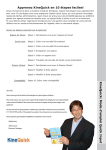

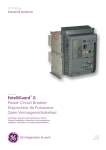
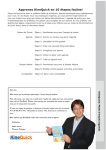



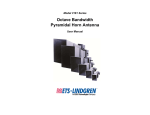
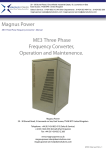




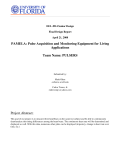
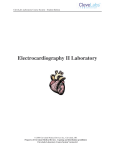
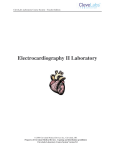
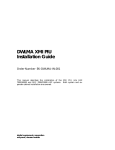


![[UK] Saver NG Data Sheets A1-2013](http://vs1.manualzilla.com/store/data/005759312_1-088a9b2c9a495b4ddfffe35115070dd1-150x150.png)
